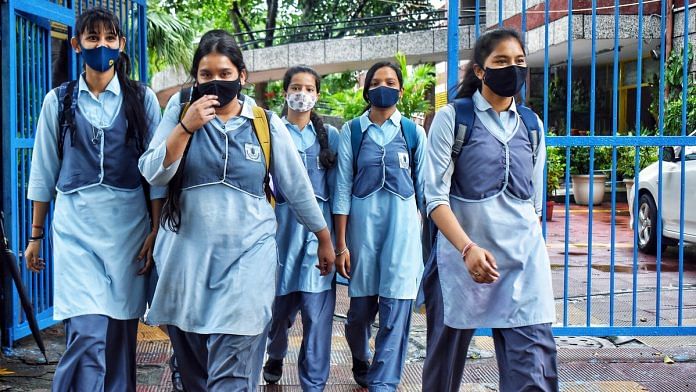New Delhi: The Annual Status of Education Report (ASER) 2021, one of the largest surveys carried out during the pandemic, was released Wednesday. Facilitated by NGO Pratham Education, the report reveals two seemingly contradictory trends: enrolment in government schools in India has gone up, and more children are now taking private tuition.
This means that parents are saving money by pulling their children out of private schools and enrolling them in government schools. But at the same time, they’re now paying new fees for private tuition.
According to the report, the proportion of children taking tuition has increased from 2018 to 2021 regardless of grade, school type, or sex. Currently, almost 40 per cent of children take paid private tuition classes. Meanwhile, enrolment in government schools has increased over the years. In 2021, more than 70 per cent of students were enrolled in government schools, up from 65.8 per cent in 2020 and 64.3 per cent in 2018.
Experts, however, say we should study whether these factors are temporary and pandemic-driven or more permanent.
Manisha Priyam, professor at the National Institute of Educational Planning and Administration (NIEPA), New Delhi, said these two facts should be looked at separately and not be linked.
“There is one fact that enrolment in government schools has increased, and that is because income vulnerability has increased. The poor have become poorer and they do not have the money to send their kids even to budget private schools. Hence, they are relying on government schools,” said Priyam.
“This also shows that the public education infrastructure has emerged as a dependable entity. Teachers reached out to students during the lockdown, and community kitchens were run. This shows that the public system needs to run and privatisation does not stand the test of time,” she added.
Also read: Only 16 states/UTs teach underprivileged kids for free in pvt schools, child rights body finds
Greater numbers for higher classes
Commenting on the increase in tuition numbers, Priyam said this shows that online education did not work and students still needed to attend physical classes in some form.
“We have to see the age and level at which more students are attending tuition. The numbers are greater in higher classes, which means that it is serving as a bridge for board students, who want to make up for the lost study time. Children attending tuition are mostly on the brink of post-school transition,” she added.
The report shows that there has been an increase in the number of students at all levels attending tuition from 2018 to 2021. However, the percentage is higher for those in Class 11 and above. More than 41 per cent of children in this age group now attend private tuitions, up from 33.6 per cent in 2020 and 35.5 per cent in 2018, the report shows.
The numbers for other age groups are also high — 37 per cent for Class 1 to 2, 39.4 per cent for Class 3 to 5 and 38.9 per cent for Class 6 to 8. All these numbers are higher than the previous years.
“What we could deduce from our survey is that tuition is a very local and flexible affair. Hence, parents who have financial constraints will also be able to send their children to tuition. They would be able to negotiate the fee and timing of payment unlike in a private school,” said Rukmini Banerji, CEO, Pratham Education.
She noted that tuition classes are easier to access during the pandemic, adding, “We should wait and see whether this is a temporary phenomenon that arises because of the pandemic or whether this is a more permanent shift in rural India’s education scenario.”
Talking about state-specific trends, Banerji said that there are some states that have traditionally seen more students attending tuition, such as West Bengal, Odisha and Bihar. However, there’s now also an increase in northern states where tuition culture is far less entrenched, including Punjab, Haryana, Rajasthan, Himachal Pradesh and others.
Also read: India has a long way to go until kids’ learning levels improve, Pratham’s Rukmini Banerji says
Largest increases in disadvantaged households
The report also shows that the largest increases in the proportion of children taking tuition are found among the most disadvantaged households, where the parents’ level of education is low. Between 2018 and 2021, the proportion of children with less educated parents who took tuition increased by 12.6 percentage points, as opposed to a 7.2-percentage point increase among children with more educated parents.
Sunita Gandhi, leading educationist and vice chair of the India Literacy Board, said that the shift from private schools to public was expected because people’s financial situation had deteriorated considerably. “15 per cent of it is because of villagers’ migration back to their villages,” she told ThePrint.
Discussing the increase in children attending tuition, Gandhi added, “We can definitely say that parents were not satisfied with the learning going on in schools. It could also be because of children moving to government schools. To compensate for the perception of a poorer education, they feel they will be able to afford private tuition. Another possible factor is the closure of private schools.”
(Edited by Rohan Manoj)
Also read: Caste or income or mother? As primary schools reopen, we need to decide who gets extra support



